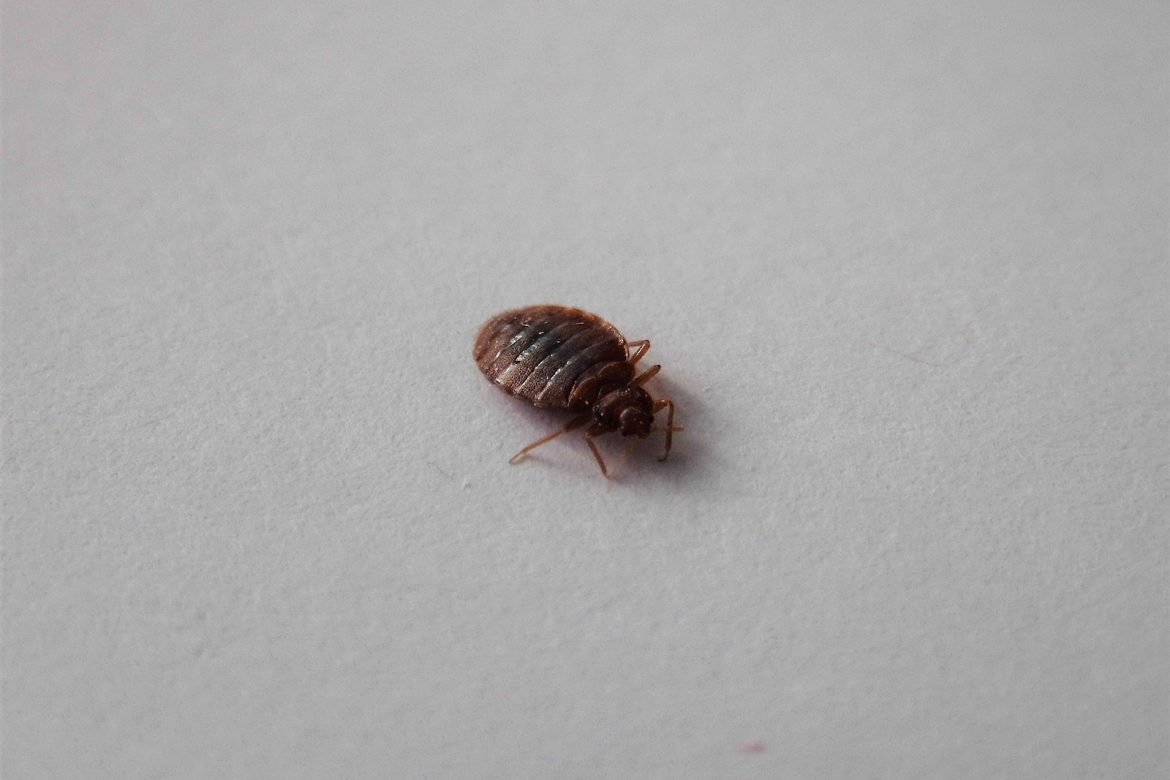If you’ve ever had a troubled night because of bed bugs, then you know how uncomfortable it can be. Only the term “bed bugs” is enough to instill fear in the hearts of anyone who has encountered them. That’s why knowing how to get rid of bed bugs is a crucial tip to have. After all, you never know when these pests might strike and ruin a good night’s sleep.
What exactly are bed bugs though? And why are they such a pain to deal with?
What are Bed Bugs?
Otherwise called Cimex lectularius, bed bugs are common household insects. They have existed with humans for centuries. These insects used to feed off bats when they dwelt in caves. Humans moved to caves, and the tiny insects changed their meal plans to human blood. By the time civilization came and humans had to move out of the caves, bed bugs moved to their new dwellings with them. They were so comfortable due to the warmth they enjoyed from human shelters that they multiplied and spread across the lands.
The term “bed bugs” primarily comes from how these insects tend to seek refuge on people’s beds. As they feed on the blood of animals and humans, they are commonly found in sleeping areas.
What Do Bed Bugs Look Like?
Bed bugs are oval, brown-colored, small insects that feed on the blood of higher animals. A full-grown bedbug has a flat body that is as big as an apple seed. When they are done feeding, their skin color changes to reddish color. From here, their bodies become swollen. These tiny bugs cannot fly but move very quickly across floors, ceilings, and walls.
These insects have six developmental stages of life. At the time their eggs hatch, they are straw-colored, very tiny, and almost invisible to the naked eye. After this first stage, they complete five more cycles as nymphs or sub-adults. They are exoskeleton creatures (having their skeletons on the outside of their bodies), which explains why they need to shed skins in order to grow. This is a process called molting, and it happens in many other exoskeleton creatures. It also requires blood for bed bugs to feed on before they shed.
After the sub-adults or nymphs have fed – depending on the hosts available – they shed and move on to the next stage. During this time, the nymphs may look like adults; only they are lighter in color and smaller. After completing the five stages, they reach adulthood. If their access to hosts and temperatures are favorable, an egg can take around seven weeks to mature into an adult bed bug.
Still, under unfavorable conditions, the process takes much longer. Once these eggs have reached adulthood, both the females and the males need regular meals of blood to be able to reproduce properly. The females are capable of laying hundreds of eggs during a lifetime, and the eggs are as tiny as specks of dust. These eggs are coated in sticky substances to help the eggs stick in between cracks or adhere to solid surfaces. They are known to cause great discomfort but have not been found to transmit diseases.
When Do Bed Bugs Come Out?
Bed bugs are mostly active at night, making them nocturnal. During the daytime, they hide in crevices and cracks very close to where their hosts sleep. They find their hosts – mostly humans – through body warmth, carbon monoxide, and other body chemicals. Additionally, they can squeeze their bodies into those areas where they find an unsuspecting sleeping host.
Even though bed bugs do not have dens, hives, or nests, they can meet in large numbers in feeding and hiding spots they find through airborne pheromones. Furthermore, they can come out to feed in five-to-seven-day intervals, meaning they spend most of their lives in hiding spots.
What Causes Bed Bugs?
People have believed the notion that a lack of proper hygiene causes bed bug infestation in homes and dwellings. However, this isn’t necessarily the case. Bed bugs infest homes or dwellings when they attach themselves or some of their eggs to surfaces of items that are brought into the homes or dwellings. You might unknowingly pick up the eggs or the bed bugs themselves when you bring infested items into your home. That, or when you visit infested areas. They can also come into your houses through false ceilings, ducts, and wall cracks from any infested apartment close to yours. Some of these bugs develop resistance to pesticides, increasing the chances of an infestation.
How Do You Check For Bed Bugs?
If you feel like there are bed bugs in your home, there are some easy tips check whether or not your living space is infested. The most crucial step is knowing where to look for them. They are not so difficult to find because they always prefer to hide in spots that are very close to their host while trying to avoid detection. With that said, it’s best to check crevices and cracks around the room. These would include headboards, mattress seams, pillows, box springs, dressers, bookcases, bedside tables, junctions in walls, and loose paneling.
You should also note that bed bugs are not restricted to bedrooms. So, you can still find them in any part of the house, and other places like loveseats, recliners, and sofas. They also find hiding spots in appliances, furniture, electrical outlets, and light switch plates.
How Do You Check For Bed Bugs During Bed Bug Treatment?
Since these bugs are nocturnal, it would be very difficult to see them during the daytime. Some marks to watch out for include:
- Fecal spots: Every living thing poops, including bed bugs. They tend to leave particles of digested blood behind, which may be black or brown. These spots are prominent indicators of where their hiding spots are.
- Smears of blood: During feeding, a bed bug may be crushed unknowingly or could even expel blood. These blood smears are darker than the red you see from a fecal spot.
- Molted exoskeletons: Bed bugs leave their molted exoskeletons behind whenever they molt. This is the main marker of the insect. The molted exoskeletons or Exuviae resemble clearer versions of the bugs. They vary in size depending on the stage the insect was in when it molted.
- Eggs and dead bed bugs: Eggs of bed bugs may be invisible to the naked eye. If you spot them, however, then their presence is confirmed. They are pearly white and are about one millimeter in length. They can also be seen in twos and threes.
Similarly, you may discover a large number of bugs together. This occurs mostly when the infestation is a little advanced. It is possible to know how old an outbreak is by the clues you may find. This means you can figure out how long the bugs have inhabited the area and how bad the infestation is. The life cycle of a bed bug can also be used as a measure of time to calculate the period of an outbreak.
Ultimately, some patterns may not be entirely accurate. However, they can at least give some information on the bed bugs in your area for proper pest control.
How to Get Rid of Bed Bugs at Home
Bed bugs can be very resilient, so stopping or even controlling an infestation can be quite the challenge. This is why having some bed bug repellant can be crucial when figuring out how to get rid of bed bugs.
Bed bug treatment and bed bug repellant tactics can go a long way in getting rid of these blood-sucking bugs. The safest steps to take are to discourage the spread of the bugs, clean your rooms, and wipe out their own homes. You can do that by:
- Decluttering your home or dwelling to avoid bed bug infestation. Since the bugs thrive in tight spaces, they will not be able to cope with open ones.
- Cover your mattresses with encasements to avoid both bed bug bites and the bed bug rash.
- Wash your clothes at hot settings. Dry them at the same temperature to kill the bed bugs off.
- Vacuum as much as you can to fend the pests off during your home’s bed bug treatment.
- Apply chemicals like bed bug sprayto crevices and cracks you may notice in door frames and walls.
If all else fails, contact a specialist in pest control if your efforts are not yielding positive results.
How Much Does It Cost To Eliminate Bed Bugs?
Bed bugs do not behave like the other insects, so the traditional ways of eliminating insects may not work on them. Most people seek professional help to carry out the extermination process. This makes it more expensive to get rid of the bugs. Professional pest removal takes an average of $2000. This covers the cost of the bed bug exterminator and everything they may need.
It may be necessary to follow up with inspections and treatments to confirm the complete elimination of the bugs. This is especially if you want to avoid any repeat infestations and the dreaded bed bug rash. Take note, however, that property damage may ensue from “over treatment” with the use of bed bug repellant or bed bug spray. The potential collateral damage comes with the territory on how to get rid of bed bugs. As such, it’s best to proceed with such a warning when pushing through with more extreme extermination processes.
How Long Does It Take To Get Rid Of Bed Bugs?
It depends on the elimination process used. Bed bugs die within about ninety minutes of being exposed to temperatures of 48 degrees to fifty degrees. However, for the total elimination of a bed bug infestation, the heat treatment takes an average of seven hours, depending on the area. The only downside to it is your home can be infested easily after a heat treatment if caution is not taken.
Then there is the chemical treatment using insecticides. This treatment takes a little above two hours, depending on the condition and size of the room. It tends to be more productive, and there will be no bed bug infestation for a long time. The downside, however, may be its health effects.
Still, knowing how to get rid of bed bugs is better than not knowing at all. These pets can be a nuisance to a good night’s rest, so eliminating them should be at the top of your to-do list. No matter the level of infestation you have, a night of peaceful sleep is still possible – so long as you do the extermination right.




